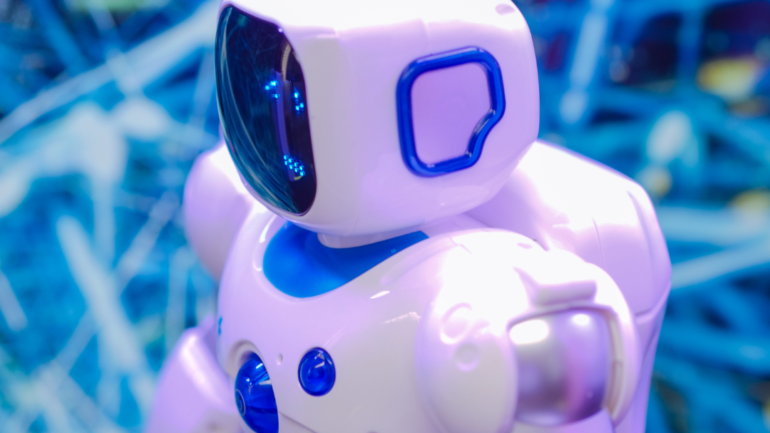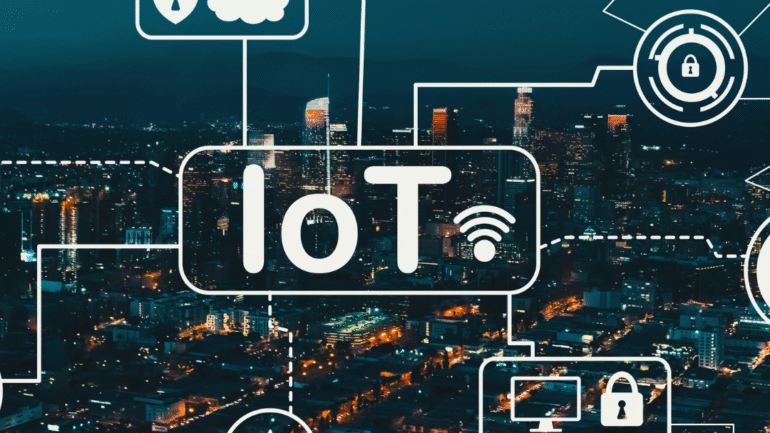New AI technology is rapidly transforming how industries operate and interact with their customers. The developments in machine learning and automation are not just trends; they represent a fundamental shift in our digital landscape. This new wave of AI tools is making it possible for businesses to enhance decision-making, streamline operations, and provide personalized experiences at an unprecedented scale.
As organizations seek to maintain a competitive edge, understanding these advancements becomes essential. From improved data analytics to innovative customer service solutions, the applications of AI are vast and varied. Engaging with the latest technologies allows companies to unlock new opportunities and drive growth.
Adopting new AI tech is no longer optional for businesses aiming for efficiency and innovation. It is crucial for leaders to stay informed and strategically implement these tools to meet the evolving demands of their markets.
Evolution of AI Technology
The evolution of AI technology has progressed through several key phases.
Early Beginnings (1950s-1980s)
- AI concepts emerged from the works of pioneers like Alan Turing.
- Initial programs were rule-based systems focused on specific tasks.
The AI Winter (1980s-1990s)
- Interest and funding for AI declined due to unmet expectations.
- Many projects failed, leading to scepticism about AI’s potential.
Resurgence (1990s-2000s)
- Renewed interest stemmed from advancements in computer power.
- Machine learning began to gain traction with better algorithms.
Deep Learning Revolution (2010s)
- Breakthroughs in neural networks enabled significant improvements.
- Technologies such as natural language processing and computer vision advanced rapidly.
Modern AI (2020s-Present)
- AI now permeates various sectors, including healthcare, finance, and transportation.
- Increased focus on ethical considerations and responsible AI usage has emerged.
The journey of AI technology reflects a pattern of peaks and troughs. Reflecting on its history highlights the adaptability and ongoing innovations that drive the field forward.
Foundational AI Models
Foundational AI models have significantly shaped various domains, enabling advancements in natural language processing, computer vision, and predictive analytics. These models form the backbone of many modern applications, driving efficiency and accuracy in data analysis and interpretation.
Natural Language Processing Advances
Recent developments in natural language processing (NLP) have transformed how machines understand and generate human language. Models such as GPT-4 and BERT have set new benchmarks for tasks like translation, summarization, and sentiment analysis.
These models leverage transformer architectures, allowing them to capture context and semantics more effectively. One key advancement is the use of transfer learning, which enables models to adapt to new tasks with minimal retraining.
Techniques like attention mechanisms improve the relevance of context in language tasks. The rise of large language models has also led to applications in chatbots, virtual assistants, and automated content creation.
Computer Vision Innovations
Computer vision has experienced rapid evolution, driven by foundational models like Vision Transformers (ViTs) and Convolutional Neural Networks (CNNs). These models excel at tasks involving image classification, object detection, and scene understanding.
ViTs introduce a new paradigm by treating image data as sequences, allowing for a better understanding of spatial relationships. CNNs, while still prevalent, remain the go-to for many image-processing tasks due to their robust feature extraction capabilities.
Recent trends include the integration of self-supervised learning, which reduces reliance on labelled datasets. Applications span across industries, including autonomous vehicles, security systems, and healthcare diagnostics.
Predictive Analytics Progress
The field of predictive analytics has advanced significantly with the integration of foundational AI models. Techniques such as time series forecasting, classification, and regression are enhanced by machine learning algorithms.
Models like Random Forests and Gradient Boosting Machines are widely used for their accuracy in generating insights from complex datasets. The incorporation of neural networks is also notable, as they enable learners to identify intricate patterns.
With developments in big data and cloud computing, predictive analytics is becoming accessible across sectors. Industries like finance, retail, and healthcare utilize these models for risk assessment, inventory management, and patient outcome predictions.
AI in Industry
Artificial Intelligence is reshaping various industries by enhancing efficiency, improving decision-making, and driving innovation. Significant advancements are particularly noticeable in healthcare, automotive, and financial services.
Healthcare Sector Breakthroughs
AI is transforming healthcare through improved diagnostics, personalized medicine, and operational efficiency. Machine learning algorithms analyze medical data to assist physicians in identifying diseases at early stages. For instance, AI systems can detect patterns in imaging studies, such as X-rays or MRIs, leading to faster diagnoses.
Additionally, AI-powered applications help in predicting patient outcomes. They analyze historical data to recommend personalized treatment plans. This tailored approach can significantly improve recovery rates and patient satisfaction. Hospitals are also utilizing AI for scheduling and resource management, optimizing staff allocation, and reducing wait times.
Automotive Industry Automation
The automotive industry is leveraging AI to enhance production processes and develop autonomous vehicles. AI technologies streamline manufacturing with predictive maintenance and quality control measures. By analyzing real-time data from machinery, companies can foresee potential failures, minimizing downtime.
Moreover, self-driving cars utilize AI to navigate complex environments. These vehicles process vast amounts of data from sensors and cameras to make decisions in real time. Advanced driver-assistance systems (ADAS) also benefit from AI by improving safety features like collision avoidance and lane keeping.
Financial Services Transformation
In financial services, AI enhances fraud detection and streamlines customer service operations. AI algorithms analyze transaction patterns to identify unusual activities, enabling quicker responses to potential fraud. This significantly reduces losses for banks and financial institutions.
Chatbots and virtual assistants improve customer interaction by providing 24/7 support. These tools can handle a variety of inquiries, from account information to transaction statuses. Additionally, AI contributes to risk assessment by analyzing market trends and customer data, enabling better investment strategies and decision-making.
Emergent AI Technologies
Emergent AI technologies are shaping the future by introducing innovative methodologies. Key advancements in generative adversarial networks, reinforcement learning, and quantum computing integration have potential applications across various industries.
Generative Adversarial Networks
Generative Adversarial Networks (GANs) consist of two neural networks: the generator and the discriminator. The generator creates new data samples, while the discriminator evaluates their authenticity against real data. This adversarial process leads to the generation of high-quality synthetic images, videos, and text. GANs are particularly valuable in fields such as art, fashion, and gaming for creating realistic prototypes rapidly.
Applications of GANs include:
- Image Synthesis: Producing hyper-realistic images for entertainment.
- Data Augmentation: Enhancing datasets to improve machine learning model performance.
- Style Transfer: Allowing the transformation of images into various artistic styles using learned characteristics.
Reinforcement Learning Developments
Reinforcement learning (RL) has seen notable advances, especially in decision-making systems. In this paradigm, agents learn optimal actions through trial and error, receiving feedback in the form of rewards. These developments enable machines to tackle complex tasks such as game playing, robotics, and autonomous driving.
Recent breakthroughs include:
- Deep Reinforcement Learning: Integrating deep learning with RL enhances decision-making capabilities.
- Multi-Agent Systems: Collaborating agents that learn to complete tasks collectively offer robust solutions in competitive environments.
Quantum Computing Integration
Quantum computing holds immense promise for enhancing AI capabilities. It uses quantum bits (qubits) to perform computations at unprecedented speeds. This technology can potentially solve problems that are currently intractable for classical computers.
Key areas where quantum computing can impact AI include:
- Optimization Problems: Providing faster solutions to complex optimization tasks in logistics and finance.
- Machine Learning: Accelerating model training through efficient data processing.
- Cryptography: Enhancing security measures in AI applications, protecting sensitive data.
The combination of quantum computing and AI could lead to transformative solutions across multiple domains.
Ethical Implications of AI
The integration of AI technologies raises crucial ethical questions that society must address. Key areas of concern include bias, transparency, accountability, privacy, and security.
Bias and Fairness
AI systems can inadvertently perpetuate or amplify biases present in training data. If these data sets reflect historical inequalities, the AI’s decisions may favour certain groups while disadvantaging others. For example, biased facial recognition systems have shown lower accuracy rates for individuals with darker skin tones.
To combat this, organizations must implement rigorous auditing processes. They should evaluate algorithms regularly to ensure fairness and inclusivity. Employing diverse teams during development can also help identify and mitigate potential biases early in the process.
Transparency and Accountability
Transparency in AI systems is essential for establishing trust. Users often lack insight into how decisions are made. This opacity can lead to harmful consequences, particularly when individuals face adverse outcomes based on AI decisions.
Organizations must ensure accountability by clearly documenting AI development processes. Providing users with explanations of how decisions are made can enhance transparency. Regular audits and adherence to ethical guidelines can further promote responsible AI usage.
Privacy and Security
AI systems often require vast amounts of data, raising significant privacy concerns. The collection and storage of personal data can lead to unauthorized access or breaches, threatening user privacy.
To safeguard privacy, strong data protection measures must be implemented. Techniques like data anonymization and encryption can minimize risks. Additionally, organizations should establish strict data governance policies to ensure compliance with privacy regulations.
Challenges and Limitations of AI
The advancement of AI technology faces multiple challenges and limitations that can hinder its effectiveness and adoption. Key areas of concern include technical difficulties, societal implications, and legal complexities.
Technical Challenges
AI systems often struggle with issues related to data quality and availability. Inaccurate or biased data can lead to poor decision-making and reinforce existing stereotypes.
Additionally, the complexity of algorithms can make it difficult to interpret how decisions are made. This lack of transparency raises concerns about accountability, especially in critical sectors such as healthcare and finance.
Another significant technical challenge is the need for substantial computational resources. Training advanced models requires powerful hardware, which can be cost-prohibitive for smaller organizations.
Societal Impact
The rise of AI raises concerns regarding job displacement. As automation becomes more prevalent, workers in certain industries may face unemployment or the need for retraining.
There is also a growing fear of privacy erosion. AI technologies often rely on massive datasets, which can include sensitive personal information.
Furthermore, AI can inadvertently perpetuate inequalities. If development teams lack diversity, their systems may not adequately address the needs of all demographic groups.
Legal and Regulatory Hurdles
Regulations surrounding AI are still evolving, leading to uncertainty for developers and users. Many jurisdictions lack clear guidelines on how to govern AI technologies effectively.
Issues such as liability in case of AI errors remain unresolved. This creates challenges for businesses that rely on AI for critical operations.
Compliance with data protection laws, like GDPR, presents further complications. Organizations must ensure that their AI systems align with existing regulations while still innovating and offering new solutions.
Future of AI Technology
The evolution of AI technology is poised to transform multiple sectors. Key areas of development include the proliferation of autonomous systems, advancements in space exploration, and enhanced human-AI collaboration.
Autonomous Systems Proliferation
Autonomous systems are set to become commonplace across various industries. Innovations in machine learning and robotics enable machines to perform complex tasks without human intervention. For example, delivery drones and self-driving vehicles are already being tested and implemented.
These technologies aim to optimize efficiency and increase safety. Industries like logistics, agriculture, and healthcare are particularly affected. In logistics, automated guided vehicles streamline warehouse operations, while in agriculture, drones monitor crops and facilitate precision farming.
The integration of autonomous systems can also reduce labour costs. As companies adopt these technologies, they can expect transformative impacts on productivity and operational workflows.
AI in Space Exploration
AI is playing a crucial role in advancing space exploration. With improvements in data processing and machine learning, AI can analyze vast datasets collected from space missions. This capability enhances our understanding of celestial phenomena and planetary systems.
NASA is using AI to assist in tasks such as identifying celestial bodies. Algorithms can sift through images to detect patterns or anomalies that may interest scientists. Moreover, AI can automate spacecraft navigation, making missions more efficient and safer.
Collaborative robots, or rovers, leverage AI to explore the surfaces of other planets. They can make autonomous decisions when encountering obstacles, significantly enhancing mission success rates.
Advancements in Human-AI Collaboration
Human-AI collaboration is set to redefine job roles across various sectors. AI tools are increasingly designed to complement human skills rather than replace them. This partnership leads to enhanced problem-solving capabilities and creativity.
In customer service, AI chatbots handle basic inquiries, allowing human agents to focus on complex issues. This division of labour improves response times and customer satisfaction.
In creative fields, AI technologies assist artists and designers by generating ideas or suggestions. These tools inspire innovation while enabling humans to maintain artistic control over projects.
As collaboration improves, training programs will adapt to prepare individuals for roles where AI plays a pivotal part.





